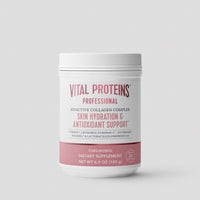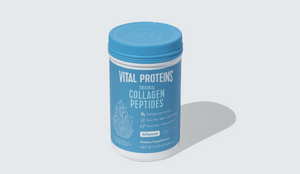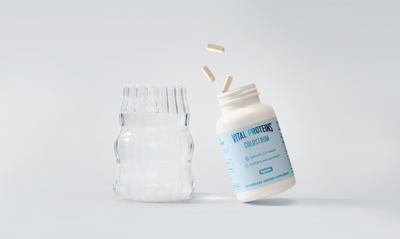What if we told you that the very makeup you use to cover your blemishes could actually be triggering them in the first case? Yeah, it’s the hard truth many of us are still coming to terms with. Thankfully, we spoke to several skin experts about how to stop these skin woes in their tracks. Read on.
why does makeup cause breakouts?
Preventing breakouts from makeup (also called “acne cosmetica,” according to Certified Dermatology Physician Assistant, Jamie Kim) goes a little (skin) deeper than just wearing less of it. It’s all about the kind of products you’re using – or not using.
To put it simply: Comedogenic products are bad news when it comes to your skin. “They clog up the skin pores, which, if not cleaned properly, can lead to acne breakouts and blemishes,” explains Dr. Dele-Michael to Lively.
That’s not to say that comedogenic products should take all the blame for breakouts though. There are other factors to consider as well.
“Blemishes and breakouts can happen to anyone even if they are not using makeup (or skincare) hormone fluctuations, excess oil production, exposure to hot humid environments, as well as genetics can influence whether you break out,” says Cosmetic Chemist Ron Robinson of BeautyStat.com.

1. Avoid these ingredients
Steer clear of any of the ingredients found on this list, as explained by Dr. Yoram Harth, a Board-Certified Dermatologist and Medical Director of MDacne.
Benzaldehyde: “This is an artificial fragrance used by some makeup producers. As with other fragrance, it can clog the skin pores.”
D & C Red: “D & C Red is a synthetic dye produced from petroleum or coal tar frequently used in color cosmetics. Although some of these colors are not allowed for use anymore (D & C # 19) You can still find others on labels (D & C Red 3, 30, 36,40, 27.) The worst are numbers 27 and 40, as they are highly comedogenic and should never be used by people with acne-prone skin.”
Isopropyl Palmitate: “Isopropyl Palmitate is a fatty acid that is frequently used in tinted moisturizers and is four on the comedogenic scale. When looking for non-comedogenic makeup, check the label and try to avoid it.”
Acetylated Lanolin: “Lanolin is the skin oil (sebrum) of sheep. In the past, lanolin was frequently used in cosmetics and skincare to moisturize and soften the skin. Unfortunately, lanolin is highly comedogenic and can cause more skin breakouts. (Other names for lanolin include acetylated lanolin alcohol, ethoxylated lanolin and PEG 16 lanolin and solulan 16)."

Algae Extract: “This ingredient is OK for anti-aging products in women with dry skin. That said, when used in concealers or other makeup products, it can clog skin pores and cause more acne.”
Almond Oil: “Almond oil is an excellent ingredient to be used on the hands and body. However, when used on the face of acne-prone people, it can clog pores and cause more breakouts and flare-ups.”
Ethylhexyl Palmitate: “Ethylhexyl Palmitate is used by some well-known makeup producers. It’s also a fatty acid that is rated 4 on the comedogenic scale. This ingredient is a common cause for clogged pores."
Lauroyl Lysine: “It is commonly included in face powders and clogs skin pores.”
Wheat Germ Oil: “This is another natural product that is suitable when added to your food. Unfortunately, when used in skincare, it is comedogenic and may be the cause of breakouts."
Sodium Chloride: “Sodium Chloride, which is another name for regular salt, is used in certain types of foundation. Similar to salty food, it can clog pores and cause more breakouts, especially on the chin and around the mouth.”
2. choose non-comedogenic products
To prevent blemishes or breakouts, do the exact opposite of comedogenic products and choose non-comedogenic ones.
“These are products to help us avoid skin pores blockage and even signs of acne or breakouts appearing on the face,” explains Dr. Adebola Dele-Michael, a Board-Certified Dermatologist.
On makeup labels, non-comedogenic products may also use words like “won’t clog pores,” says Dr. Dele-Michael. You should also look out for "oil-free," "non-acnegenic” and “salicylic acid.”
For instance, avoid foundations that are oil-based, as these tend to clog the pores, and opt for water-based or mineral-based makeup instead, says Kim.
Elizabeth Geddes-Bruce, MD, a Board-Certified Dermatologist at Westlake Dermatology, agrees. “Mineral powder makeup can provide nice natural coverage while not occluding the pores,” she says.
“If you must wear a high-coverage, potentially acne-causing makeup, then save it for special occasions out and remove it as soon as possible when you get home.”

3. regularly clean your makeup brushes
If you’re using them every day to contour, highlight and accomplish every other makeup technique under the sun, you shouldn’t be waiting weeks (and definitely not months!) to give your brushes the kind of cleaning they deserve.
“Since breakouts are caused by bacteria that forms in a clogged pore, keeping your makeup brushes clean will help prevent further exposure to acne-causing bacteria,” says Robinson.
While a daily clean is what experts recommend the most, you could get away with doing it on a weekly basis. Simply add a few drops of mild dish detergent to warm running water, says Dr. Geddes-Bruce.
4. store your makeup brushes properly
The way you store your makeup brushes is also super important to preventing the chances of blemishes.
“If you clean them and put them back in a bag that has old makeup or particles, it can cause them to become dirty again, which can harm your face,” advises Dr. Dele-Michael.
To avoid this kind of cross-contamination, she recommends having two separate bags: one specifically for clean brushes and another for everyday use. You should also store them in a cool place, says Kim.
Lastly, make sure that you have clean hands when applying your makeup, Dr. Geddes-Bruce tells Lively. “Although acne is not primarily an infectious disease, bacteria can contribute to its development so it’s best to keep things clean.”

5. don't sleep with makeup on
No surprise here: Sleeping with your makeup isn’t exactly making your skin glow. The residue can seep into your pores and cause breakouts, says Kim.
Not sure which makeup remover to use to take the day off? This guide will help!
Forgot to take it all off one night and a blemish appeared overnight? There is something you can do.
“You can treat the breakout with acne-fighting products, says Kim. “Benzoyl peroxide, salicylic acid, and adapalene are all available over the counter and are used to treat acne. For example, you can use a salicylic acid-containing wash, along with a benzoyl peroxide or adapalene spot treatment gel.”
Noted!













